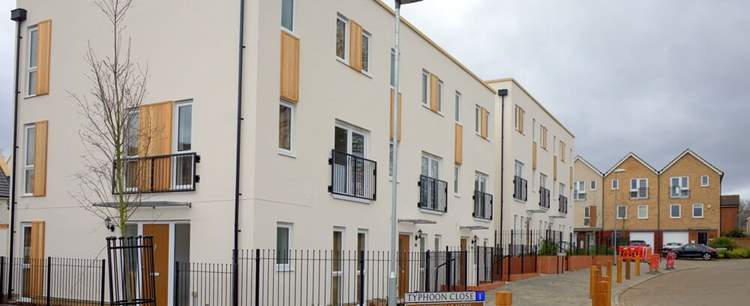If you own any kind of property, you will appreciate the importance of buildings insurance.
Just as the name suggests, it is designed to protect the structure and fabric of the building against potentially severe risks of loss or damage from events such as fire, explosions, flooding, impacts (from vehicles and falling objects), storm damage, vandalism, and theft.
Buildings insurance for flats
Blocks of flats require just such insurance protection, too. But in the same way that a block of flats is a unique kind of building, unlike a freestanding, single residence, for example, then the insurance, too, is also a distinctive, specialist form of cover.
Probably the single most distinctive feature of a block of flats, for example, is the fact that the whole building is typically owned by a landlord who then grants tenancies to the individual leaseholders who occupy the flats. In return for the rights granted by those leases, the freeholding landlord typically charges a ground rent and a service charge – the latter designed to cover the cost of maintenance and services provided in common to the entire block, together with building insurance.
Buildings insurance … and more
Typically, therefore, the freeholder owner of the block – or landlord – is responsible for arranging buildings cover.
But the building insurance may also cover much more than just the structure and fabric of the block. It may also extend to cover for:
- any outbuildings;
- common leisure facilities;
- communal walls and gates;
- car parks;
- underground cables and pipes;
- external aerials; and
- items in the communal areas – such as furnishings and furniture – for which the landlord is responsible.
It’s not always straight forward
From the description so far, it might seem that the landlord’s responsibility for building insurance is clear-cut and straight forward. That is by no means always the case, however – as consideration of the following example of a leak of water – or escape of water – in a leaseholder’s flat might illustrate.
As the Leasehold Advisory Service points out, leaking water is an not infrequent incident in blocks of flats. Although the potential for extensive damage – affecting many of the flats in the block – is considerable, it is not always straight forward to work out who is responsible for organising repairs and remedial work – nor, just as importantly, who should pay.
Although the occupant of any flat – any leaseholder – has a duty to mitigate further damage from an escape of water by reporting and attempting to stop the leak as soon as possible, overall responsibilities are typically set out in the lease or tenancy agreement.
In the great majority of cases, this will make clear that the landlord or freeholder is responsible for the structure of the block, its exterior and the main pipes serving flats in common. For repairs to pipework inside an individual flat, however, the lease agreement may put responsibility firmly in the leaseholder’s court.
Most disputes, therefore, are likely to arise in determining whether a fault or escape of water originated in pipework within the landlord’s specific area of control and responsibility – in other words, communal pipework serving flats in general rather than the internal pipework of a particular flat.
If the landlord accepts responsibility, of course, a claim is made on the building insurance for the block of flats – with any excess payable potentially added to the general service charge paid collectively paid by all the leaseholders.
Right to Manage
Responsibilities for safeguarding the structure and fabric of the block of flats and for arranging the necessary buildings insurance might have passed to a collective of the individual leaseholders themselves.
This will have been achieved by a common majority of the leaseholders deciding to exercise their so-called Right to Manage.
This is a legal right given to the leaseholders in a block of flats who decide to assume those responsibilities otherwise assumed by the freeholder or landlord – responsibilities for the upkeep and maintenance of the exterior of the block and its common areas, managing and collecting the service charge that covers that maintenance, dealing with complaints about the building from other residents, and arranging the building insurance to safeguard the block against loss and damage.
The last item may prove a deciding factor for leaseholders who believe that any Right to Manage company they form will be in a stronger position to negotiate better value for money in the buildings insurance arranged than any alternative arranged by the landlord.
A majority of the leaseholders may exercise such a Right to Manage and have no need to give the freeholder any reason for doing so. The freeholder, in turn, has no right to impede or obstruct the leaseholders’ exercise of this right.
At UKinsuranceNET, we offer both buildings insurance for flats and Right to Manage insurance. If you are the landlord of a block of flats or you are part of a collective of leaseholders looking for Right to Manage insurance, then we can help find you the most cost-effective and suitable solution.



